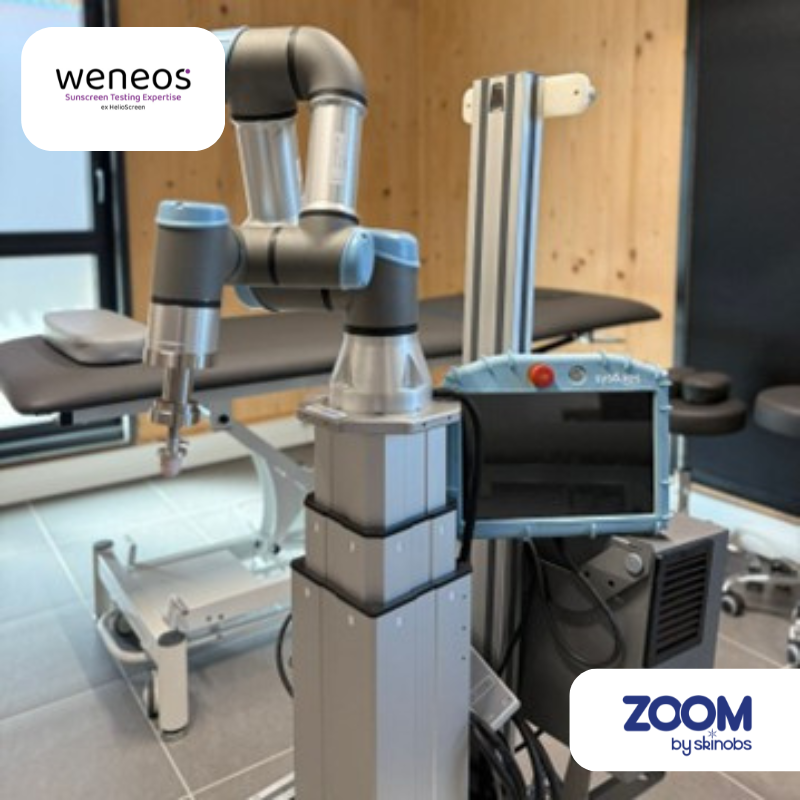For the first time, robotic spreading on human skin in now a reality in sun protection testing.
While application procedures are described in international standards, manual spreading remains a major source of variability and reproducibility challenges, both within and between laboratories. Until now, robotic spreading was only used in in vitro protocols (ISO 23675, ISO 24443). Now, with in vivo robotic spreading, HDRS and other in vivo methods (such as in vivo SPF ISO 24444 and UVAPF ISO 24442) could reach a nex level of standardization, making test results:
- More reproducible,
- Less operator-dependant,
- Easier to harmonize across laboratories,
- Faster to train for new technicians.
A concrete step forward toward more reliable, and more ethical hybrid sun protection testing.
CONTACT
Jade Beaumont
HDRS Laboratory Manager

Discover Weneos’ full expertise in Clinical and Preclinical research here:
– Clinical: https://www.skinobs.com/c/labo.php?id=450
– Preclinical: https://www.skinobs.com/p/labo.php?id=201





